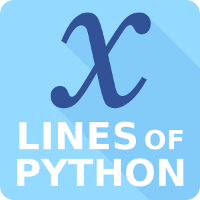Unsolved problems in applied geoscience
/I like unsolved problems. I first wrote about them way back in late 2010 — Unsolved problems was the eleventh post on this blog. I touched on the theme again in 2013, before and after the first 'unsession' at the GeoConvention, which itself was dedicated to finding the most pressing questions in exploration geoscience. As we turn towards the unsession at AAPG in Salt Lake City in May, I find myself thinking again about unsolved problems. Specifically, what are they? How can we find them? And what can we do to make them easier to solve?
It turns out lots of people have asked these questions before.
I've compiled a list of various attempts by geoscientists to list he big questions in the field. The only one I was previous aware of was Milo Backus's challenges in applied seismic geophysics, laid out in his president's column in GEOPHYSICS in 1980 and highlighted later by Larry Lines as part of the SEG's 75th anniversary. Here are some notable attempts:
- John William Dawson, 1883 — Nova Scotia's most famous geologist listed unsolved problems in geology in his presidential address to the American Association for the Advancement of Science. They included the Cambrian Explosion, and the origin of the Antarctic icecap.
- Leason Heberling Adams, 1947 — One of the first experimental rock physicists, Adams made the first list I can find in geophysics, which was less than 30 years old at the time. He included the origin of the geomagnetic field, and the temperature of the earth's interior.
- Milo Backus, 1980 — The list included direct hydrocarbon detection, seismic imaging, attenuation, and anisotropy.
- Mary Lou Zoback, 2000 — As her presidential address to the GSA, Zoback kept things quite high-level, asking questions about finding signal indynamic systems, defining mass flux and energy balance, identifying feedback loops, and communicating uncertainty and risk. This last one pops up in almost every list since.
- Calgary's geoscience community, 2013 — The 2013 unsession unearthed a list of questions from about 50 geoscientists. They included: open data, improving seismic resolution, dealing with error and uncertainty, and global water management.
- Daniel Garcia-Castellanos, 2014 — The Retos Terrícolas blog listed 49 problems in 7 categories, ranging from the early solar system to the earth's interior, plate tectonics, oceans, and climate. The list is still maintained by Daniel and pops up occasionally on other blogs and on Wikipedia.
The list continues — you can see them all in this presentation I made for a talk (online) at the Bureau of Economic Geology last week (thank you to Sergey Fomel for hosting me!). During the talk, I took the opportunity to ask those present what their unsolved problems are, especially the ones in their own fields. Here are a few of what we got (the rest are in the preso):
What are your unsolved problems in applied geoscience? Share them in the comments!
If you have about 50 minutes to spare, you can watch the talk here, courtesy of BEG's streaming service.




































 Except where noted, this content is licensed
Except where noted, this content is licensed